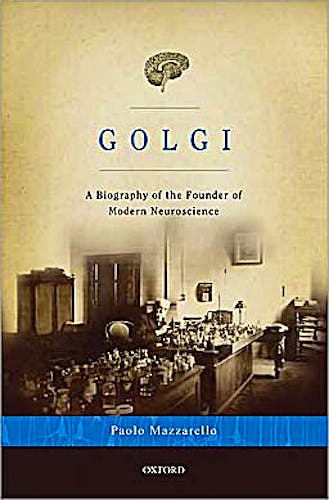

No hay productos en el carrito



Golgi. a Biography of the Founder of Modern Neuroscience
Mazzarello, P.
1ª Edición Diciembre 2009
Inglés
Tapa dura
528 pags
1500 gr
16 x 24 x null cm
ISBN 9780195337846
Editorial OXFORD USA
LIBRO IMPRESO
-5%
87,30 €82,94 €IVA incluido
83,94 €79,75 €IVA no incluido
Recíbelo en un plazo de
2 - 3 semanas
Description
This biography has been written by the most important specialist in the life of Golgi
Camillo Golgi is probably the most quoted name in current biological literature since there is no volume of a scientific magazine, like Science or Nature in which his name does not appear. Nevertheless his life is one of the most ignored in contemporary history of science and biomedicine.
The book has been written like a romance given the many culturally dramatic moment of Golgi's life facing the opposite theories of his antagonists, first of all that of the Spanish histologist and anatomist Santiago Ramón y Cajal.
The book contains the complete bibliography of Golgi and the detailed secondary literature on him up to now.
This book is unique for the detailed description of the major discoveries of Golgi in the context of the corresponding Italian and European history of science and society.
This book is a complete biography of Camillo Golgi one of the most prominent European researcher between the Nineteenth and the Twentieth century, a period of dramatic scientific development. The life of Golgi was an extraordinary intellectual adventure in three major fields of biology and medicine, namely the neuroscience, the emerging cell biology and the new science of medical microbiology.
In 1873 Golgi published the description of a revolutionary histological technique which allowed, for the first time, to visualize a single nerve cell with all its ramification which could be followed and analyzed even at a great distance from the cell bodies, the so called "black reaction" (later named the "Golgi method"). This invention provided the spark to a truly scientific revolution which allowed the morphology and the basic architecture of the cerebral tissue to be evidenced in all its complexity, thus contributing to the foundation of the modern neuroscience. It has been written that, in the same way Galileo Galilei was able to find new stars observing with his telescope any sky region, Golgi was able to find new nervous structures and nerve cells by applying his black reaction to any brain region. Finally, the details of the most complex structure in the known universe, the brain, could be characterized.
Golgi also strongly contributed to the development of cell biology with the discovery of one of the major organelles of the cell, the "internal reticular apparatus" (later named the "Golgi apparatus" or the "Golgi complex" or simply "the Golgi") and to medical microbiology with his description of the human malaria parasitic development inside the red blood cells (Golgi cycle).
He was also a prominent political figure who deeply influenced the Nineteenth century development of science in Italy.
Readership: Historian of science, historian of biology, historian of medicine, neuroscientists, cell biologists, infectivologists, historian of post-Unitarian Italy (Nineteenth - first half of the Twentieth century), students of biology and medicine who frequently found the name of Golgi in their handbooks
© 2025 Axón Librería S.L.
2.149.0